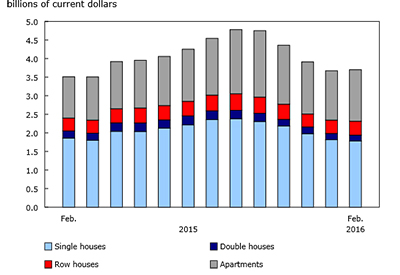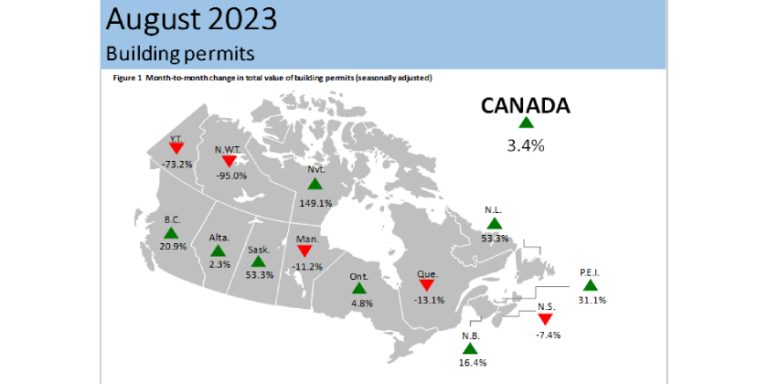February Spending on New Housing Construction Up 5.4% YOY

May 3 2016
Spending on new housing construction totalled $3.7 billion in February, up 5.4% from the same month a year earlier. Nationally, the gain was the result of higher investment in apartment and apartment-condominium building construction, which increased 24.8% to $1.4 billion, and, to a lesser extent, row house construction, which rose 8.2% to $373 million. In contrast, investment in single-family dwellings was $1.8 billion, 4.3% lower than in February 2015, while spending on semi-detached dwelling construction declined 18.1% to $160 million.
At the provincial level, increases were recorded in three provinces, led by Ontario, followed by British Columbia and Quebec.
In Ontario, investment in new housing construction rose 28.0% to $1.5 billion in February compared with the same month a year earlier. The increase resulted from higher construction spending on all dwelling types except semi-detached dwellings, for which investment has been on a downward trend for the last 12 months. Higher investment in single-family houses and apartment and apartment-condominium buildings accounted for much of the advance.
In British Columbia, new residential construction investment rose 21.8% year over year to $765 million. Construction spending on apartment and apartment-condominium buildings led the advance, rising 49.5% to $335 million. Higher investment in single-family dwellings and row houses also contributed to the gain.
In Quebec, investment totalled $502 million in February, up 4.8% from February 2015. Increased spending on apartment and apartment-condominiums more than offset lower investment in single-family houses and semi-detached dwellings.
The seven remaining provinces reported lower spending on new housing construction in February compared with the same month in 2015. The Prairie provinces registered the largest decreases, led by Alberta. The 24.7% decline in Alberta came mainly from lower investment in single-family dwellings.
Source: Statistics Canada, www.statcan.gc.ca/daily-quotidien/160421/dq160421d-eng.htm.

















